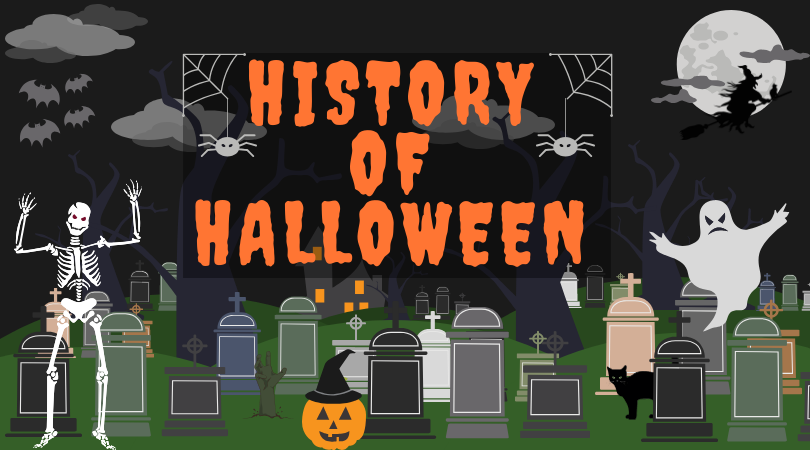
Cooling weather, colorful trees, and pumpkin spice everything. All of these things usher in the coming of Fall, with Halloween emerging not far behind. For many, Halloween is a way to dress up in cool costumes and eat as much sugar as humanly possible. But this holiday has a rich history rooted in tradition and spirituality.
This Halloween, take a moment to discover the history of this holiday!
The word Halloween means ‘holy evening’, and originates from the Scottish term for All Hallows’ Eve.
Halloween is known to have its origins in Pagan practices, rooted in Celtic tradition. The Celts celebrated Samhain (sahh-win), which marked the end of the harvest and the beginning of winter.
The Celts believed that on Samhain, the worlds of the living and the dead coalesced, and spirits returned to the physical world. Druids, or spiritual leaders, were said to have strengthened powers strengthened during this time, allowing them to predict fortune and fate. Large bonfires were built, burning crops and animal sacrifices for Celtic deities, while also warding off the devil.
In Christianity, May 13 was dedicated as All Martyrs Day to honor all Christian martyrs. Later, the day included Saints in the celebration, changing the name to All Saints Day. The festive day was also moved to November 1st.
As Christianity spread to Celtic countries, All Saints day traditions melded with Samhain traditions. All Saints Day was also called All-Hallows, and the night before was called All Hallows Eve-- which later became known as Halloween.
All Saints Day and All Hallows Eve were known as vigil holidays. Some denominations abstained from eating meat on All Hallows Eve, encouraging vegetarian meals including apples, potatoes, and baked goods.
Originating in the middle ages, ‘soul cakes’, made with spices and dried fruit, were given to “soulers”, usually the poor or children, who would go door to door singing and saying prayers. This may be the origin of the modern-day tradition of Trick-or-Treating.
“Guising” is known as the earlier version of dressing up in costumes. Popular in Scotland and Ireland, the tradition eventually found its way over to America. The first recorded instance of guising in the United States occurred in the 1910’s. Over time, guising evolved and became tradition.
Modern-day symbols of Halloween come from the rise of the macabre in literature and film. Vampires and zombies come from Stoker’s Dracula and Shelley’s Frankenstein, staples of Gothic literature, while the prevalence of spirits and skulls reflect the holiday’s roots of respecting the dead.
The memento mori ideology of the Victorians might have had an influence on the abundance of these symbols, as jewelry or coins with skulls on them were worn as a reminder for their eventual demise. Over time, other things supernatural or creepy became associated with Halloween.
So this Halloween, eat some candy, watch some scary movies, visit haunted houses, and take a moment to respect the spirits of those gone. No matter how you celebrate Halloween, it serves as a reminder to enjoy life and indulge in the things that frighten us.

-1.png)
